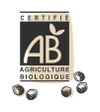
How to successfully grow chives
Related to spring onions, onions, and shallots, chives are grown for their aromatic and condiment-like leaves . Just two or three clumps of this easy-to-grow plant are enough to provide for a family. Undemanding and hardy, chives can thrive in the ground or in pots . Chives are one of the most popular aromatic and condiment-like herbs in European cuisine. They form beautiful, dense clumps, and their flowers are lovely. Even if the winter is a little chilly, they generally keep their leaves and can therefore be harvested all year round.
Article Summary
A little history about chives
Latin name : Allium schoenoprasum
Order : Liliales
Family : Liliaceae
Genus : Allium
Species : Chives

The History of Chives
Related to spring onions, onions, and shallots, chives are grown for their aromatic and condiment-rich leaves. Just two or three clumps of this easy-to-grow plant are enough to provide for a family. Undemanding and hardy, chives thrive in the ground or in pots. Chives are one of the most popular aromatic and condiment-rich herbs in European cuisine. They form beautiful, dense clumps, and their flowers are delightful. Even if winters are a bit chilly, they generally retain their leaves and can therefore be harvested year-round.
Etymology
The term "chives" comes from the Occitan "ciboleta", meaning "small onion".
Taste
The taste of chives is reminiscent of onion, but much finer, more delicate, with a slight hint of garlic.
Nutritional values
Chives are said to have digestive and aperitif properties. They are rich in vitamins A, B, and C and contain mineral salts.
Anecdotes
Care must be taken with chives. Only the leaves and flowers should be eaten, as the bulb is inedible. It can be toxic to animals, especially cats and horses.
How to grow chives?
Technical information
- Difficulty level : 1/3
- Density : 25 to 35 plants/m².
- Life cycle : Perennial.
- Weight per 1000 seeds : Approximately 1.2 to 1.3 grams.
Climate and soil
-
Climate zone and hardiness : Chives like temperate zones.
- Soil type : Fresh, humus-rich, well-worked soil.
- pH : Neutral soil.
- Moisture : Well-drained soil.
- Exposure : Sunny or partial shade.
- Frost resistance : Chives are quite cold-resistant. In fact, they can withstand temperatures down to -20°C.
How to successfully sow?
- Sowing period : From March to April.
- Type of sowing : Sow in pots.
- Locations and conditions : Sow in a pot, in pockets of 4 to 5 seeds. This is the way chives will grow best.
Open ground / without protection: Sow directly in place, in pockets of 4 to 5 seeds, but emergence could take longer than for sowing under cover. - Germination temperature : 18°C
- Need for cold proofing : Cold proofing allows for more even and faster rising, but is not essential.
- Soaking : Not necessary.
-
Distancing :
- In the row: 20 cm in the row.
- Between rows: 20 cm between rows.
- Sowing depth : 0.5 cm deep.
- Rising time : 15 days.
- Thinning : Thin slightly after emergence, keeping only the most vigorous plants in place. Collect the others to plant elsewhere or for direct consumption.

Crop maintenance and care
- Soil preparation : Work the soil well before planting, and feed it with nettle manure.
- Transplanting : When the potted plants begin to grow and appear strong, transplant them into the ground 20 cm apart in all directions.
-
Watering :
- Frequency: Regular watering.
- Quantity: Moderate watering.
- Period: At the beginning of the growing season and in case of drought. When growing in pots, do not allow water to stagnate in the saucers or the bulbs may rot.
- Tools : Watering can, hoe and hoe or weeder.
- Hoeing / weeding / ridging / mulching Regular hoeing and weeding are recommended to keep the soil well aerated.
- Harvest period : 2 or 3 months after sowing, then every year throughout the year except during harsh winters.
- Plant part : The stems and petals of chive flowers are eaten.

Cultivation techniques
Crop rotation
Chives can stay in place for 3 or even 4 years.
Companion plants
In the garden and vegetable patch, chives are a gardener's ally because they protect vegetables and roses from aphids and black spot. They are also a good companion for carrots, celery, cucumbers, gherkins, and tomatoes. However, chives do not mix well with garlic, cabbage, shallots, fabaceae, onions, chilies, and bell peppers.
Technical gestures
Cut the stems every month for vigorous growth. It is recommended to cut the flowers as soon as they appear to avoid tiring the chive plants.
Conservation and storage
- Directions: Chives can be frozen or dried, but they will lose their flavor and are always better fresh.
-
Shelf life: Frozen or dried chives can be stored for several months, but fresh chives will only keep for 2 or 3 days.
Uses of chives
- Culinary : The aroma of chives is reminiscent of onions, but much finer, more delicate, with a slight hint of garlic. The flower petals enhance salads. The stems are used raw to flavor crudités, salads, soups, sauces, cheeses, omelets, or white meat. However, unlike their cousin the spring onion, the chive bulbs are not edible.
Tips and tricks
Like other species in the Liliaceae family, such as garlic, shallots, and onions, chives can be used as a repellent plant. Their presence may help neighboring plants be less affected by insects such as aphids and carrot flies.
Diseases and pests of chives
Diseases
The pests
Chives do not seem to fear any disease.
Chives are susceptible to leaf beetles and sorrel flies. The leaves turn yellow if there is too much moisture. Leaf beetles appear as blackish larvae that devour the leaves. They must be picked off by hand. The sorrel fly lays its larvae on the leaves. These dig tunnels and kill them. Diseased plants must be cut down and burned.





